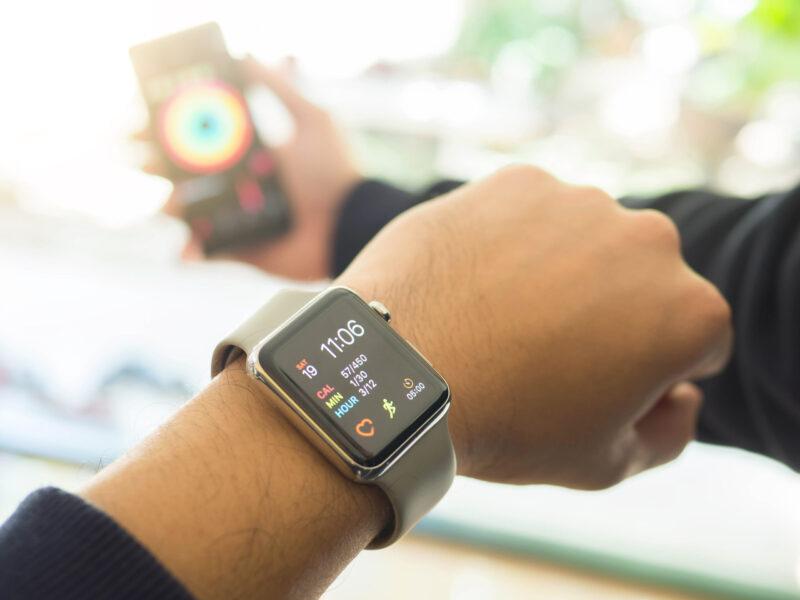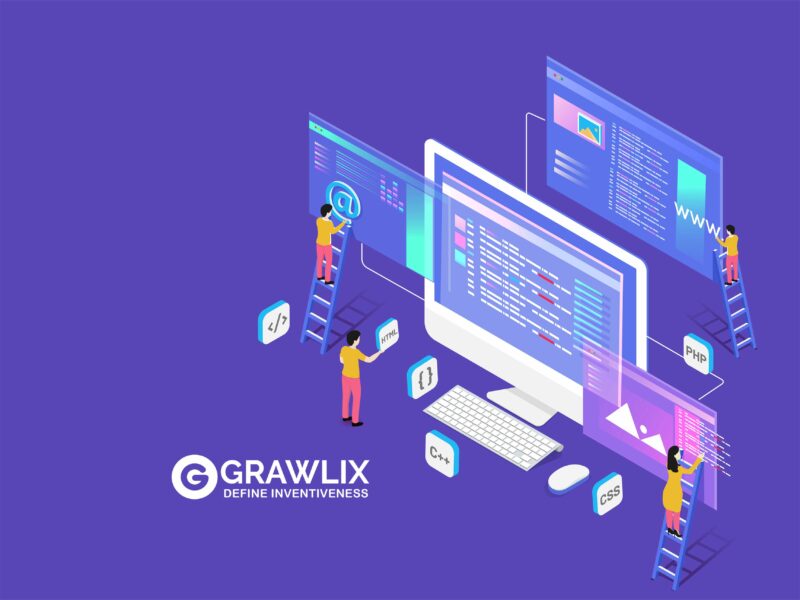
Digital Marketing, Web Design, Web Development
APPLE HEALTH, GOOGLE FIT: INTEGRATION PLATFORMS FOR HEALTH, WELLNESS, AND FITNESS
The raw data available from the sensors integrated into smartphones, as well as the expanding role of linked wearables and other smart external devices, were discussed in previous pieces in this series.
The primary topics of combining Google Fit and Apple Health – the two most significant and widely used systems for obtaining and contextualising data – are discussed in this post.
What do you need to know about the two major health and fitness platforms if you want to create a health-related mobile app?

The Apps: Google Fit and Apple Health
These platforms can help your app take off right away. Millions of people use Google Fit and Apple Health, which are both free mobile phone apps. Fit is a free download from the Google Play Store, and Health comes pre-installed on iOS devices and watches. The ability of your software to work with one (or both) of these platforms gives value to mobile phone users.
Google Fit is a fitness app for Android and iOS phones, as well as Android Wear wearables. It can connect to Apple Health and its synchronised apps in addition to its own platform’s features. On Android handsets, the Google Play Store provides many Fit-compatible apps as well as a list of apps that work with Apple Health.
Apple Health is more exclusive, as it is not available on non-iOS devices such as Android. The iPad does not have a health app. Apple states that nearly 10,000 apps in the App Store employ APIs from Apple HealthKit (for Apple Health), CareKit, and ResearchKit.The Apple Store highlights compatible Bluetooth smart gadgets such as scales, blood pressure monitors, thermometers, and a UV sensor (Withins, Beddit, La Roche-Posay).
While they do use data from smartphone sensors, the app’s functioning is heavily reliant on connection with a compatible smartwatch or other activity tracker. Apple Health is compatible with Apple Watches, whereas Google Fit is only compatible with Android Wear watches.Other trackers may be compatible with each platform, although they may necessitate the use of a third-party syncing tool such as Synch Solver (for Apple Health) or FitToFit (for Google Fit). The same is true for Bluetooth-enabled gadgets, which frequently necessitate a separate app for each device.
Both apps include daily dashboards and histories of things like steps, effort levels, and healthy habit development.
Google Fit Focuses on Specific Workouts While Apple Health Tracks Overall Wellbeing

Overall, Google Active has found its sweet spot in terms of assisting consumers in developing habits that will help them become more fit and healthy. Fit focuses on the frequency and intensity of physical activity first, employing point systems based on the American Heart Association’s recommendations – Move Minutes and Heart points. User self-reporting or related apps are required in other areas such as diet, hydration, and sleep.Fit has access to other Google Services because the Google ID is utilised, therefore it may be used to add scheduled exercise by time, duration, kind, and recurrence to Google Calendar, for example.
AppleHealth includes additional capabilities related to overall health information and tracking, such as an emergency medical ID. From healthcare institutions, Apple Health customers can obtain and update portions of their clinical records. The HealthKit shop has Fast Healthcare Interoperability Resources (FHIR) categorised by records of a single procedure, result, or condition.
“Overall, Google Fit is better at specific workouts, and may be better if you’re looking for something to routinely hit the gym with; Apple Health is better at keeping track of your wellbeing,” writes Wareable.

These two programmes have a lot more in common than their initial features would lead you to believe. They’re competing in a comparable arena, with similar approaches, in a changing, moving environment.
If a feature you wish to add to your app relies on data that can only be obtained via iOS or Android devices’ tools, you may choose to create just one version. You could create a version of your mobile app for both Apple iOS and Android handsets, or you could create a hybrid of the two.Another approach is to use a development framework like React Native, Ionic, NativeScript, PhoneGap, or Xamarin to create a cross-platform app with slightly different functionality.
Behind the Apps: Data Integration Hubs, SDKs, APIs

Apple Health and Google Fit are only user-facing components of much broader ecosystems.
Google Fit SDK and Apple HealthKit, on the other hand, are secure open-source integration platforms that collect, organise, store, and track health and fitness data from a variety of services and applications. That’s when they start to make sense for mobile app development.
Developers will find it easy to share, store, and analyse data with both platforms. Much of the development work for getting and exchanging structured data has already been completed, in addition to collecting crucial user data required for functionality.Additional data points and histories are produced by the platforms as a result of calculations, aggregates, and correlations, all of which are ready for further study. You can use the open-source software development kits and platform APIs to support extra services if your app fits specific criteria (more on that later).
The SDK (Software Development Kit) – or simply “Kit” – refers to the entire open-source platform that includes the tools and documentation needed to build apps. SDKs for in-scope devices are classified by target operating systems, programming languages, and type of APIs (Android, REST).
- Apple’s HealthKit and HealthKitUI frameworks are compatible with iOS 8.0 and higher, Mac Catalyst 13.0 and higher, and watchOS 2.0 and higher. The iPhone and Apple Watch each have their own HealthKit store, but the iPad does not have one. Swift or Objective C are the two programming languages available. The iCloud stores health information.
- The fitness store (a Google cloud service that stores data from devices and apps in a safe repository), the sensor framework, permissions and user controls, and the Google Fit APIs are all included in the Google Fit SDK.

PIs (Application Programming Interfaces) allow apps to work inside the SDK’s set parameters and are what allow data from numerous apps and devices to be combined. The API is a set of public methods and attributes that interact with objects in your programme. It is basically an interface that allows software to interact with other software.Mobile apps can read data from dedicated URLs using APIs, which return structured data “objects” that can interact. Users control the scope of permissions in terms of what data can be shared with which apps and services.
The schemas for a stream of data being collected, added into, or queried are defined by subclasses of data types. From simple data types that combine samples of data or compute aggregate values over sets of samples to sophisticated data types that mix samples of data or compute aggregate values over sets of samples, a data type can include one or more fields. Phone sensors, wearable gadgets, user input, connected apps and services are all classified as data sources.
Apple Healthkit vs Google Fit Data: What Data Matters Most for Your App?

What types of data does each platform have or supply, and how are they organised?
Start thinking about what services your app could provide in this type of environment as a pro-tip:
- What types of information would your app need, and why?
- What source(s) would that information come from – Self-reporting by users, phone sensors on Android and/or iOS smartphones, watches/fitness trackers, and Bluetooth-enabled external devices?
- Will the app necessitate the use of sensitive, protected, or restricted data? What are some examples of how you might use or construct calculations, correlations, aggregations, and interpretations?
It may be challenging to get through each platform’s SDK documentation. A look at the summary schemas for Apple HealthKit and Google Fit data types at the conclusion of this article can help you figure out if the architected data types of either platform can give or enable functionality for your health and fitness app.
You may be able to deliver a good service with only a few metrics, but there are built-in variables and means to add various types of data to both platforms if you want to build out extra value from specific sorts of activities or health measurements.
Non-health custom data types are allowed in Google Fit, and some metadata can be supplied to both platforms or within your own app. You’ll need to talk to developers about the best ways to use the platforms in this case.
Consider weightlifting as an example of the types of things that are feasible. A user can add a workout session to a weightlifting category on any platform and track some basic parameters like heart rate, exertion, time, and so on.
Additional workout activity factors, on the other hand, are already available as structured data. Those factors could be used by specialised enthusiasts to provide more relevant information, such as tracking combinations of repetitions, sets, weights, and types of workouts toward goals.Strong, Fitness Point, and Fitbody are just a few of the apps that have taken use of the increased data set and added their own features to it.
Health Data Can Be Leveraged Across Apps
Nutritional data can also be utilised and expanded for tailored dietary programmes in new mobile apps. Water intake can be repurposed for scenarios such as inventory planning for camping trips and store depletion. The entire health and fitness quadrant might be integrated into a larger smart home dashboard that is personalised for each family member.
Privacy, Access, Policies: Reading and Writing Data to Google Fit or Apple HealthKit

Many factors influence your app’s capacity to gather, store, and exchange different sorts of data. Google, Apple, and government agencies examine and enforce user permission, privacy, security, and other related app development rules. Restricted, protected, and sensitive data are all terms used to describe data that is restricted, protected, or sensitive. Other programmes can write data, but they can’t read it.Some user data isn’t available for use at all, while others is linked to Google or Apple’s broader ecosystems.
Start With a Streamlined Approach
Start with the bare minimum of metrics that your app will require to perform in its intended manner if it is designed to fit into the health and fitness vertical. New apps can deliver significant services even with only a few data points and other features.
If your app is focused on exercise, weight loss, nutrition, or standard physical activity tracking, you can offer value by describing how your app will complement (or connect to) the architectural capabilities of either platform. Fitness-related apps can bring value by balancing different exercise types or comparing the outcomes of different fitness programmes.Medical apps, which could be used for diagnostics, remote monitoring, disease management, prescription administration, or personal health records, have a higher threshold.
Regulatory Approval Is The Barrier Between A “Wellness” and A “Diagnostics” App

One of the major issues is that medical devices can only be utilised as a “wellness” feature without regulatory approval from governmental agencies such as the Food and Drug Administration in the United States. Apple did receive approval to utilise the Apple Watch’s EKG feature as an early warning system for abnormal heart rhythms, but exclusively for that purpose.
The FDA’s Unique Device Identifier (UDI) initiative mandates that all regulated medical devices sold in the United States be assigned a unique identification number from manufacturing through distribution to patient use and digital records.
Apple, Google, and others are wary about what is stated and how it is marketed because general health, fitness, and wellness features that aren’t used to diagnose don’t require FDA approval.
When it comes to producing and distributing mobile apps, businesses and developers must be aware of the legislation and regulation. Both Google Fit and Apple HealthKit require fine-grained user permissions for accessing and sharing data, and both platforms are subject to a slew of security, privacy, and access policies and laws.
The Apple Store review requirements for mobile apps must be followed, and user privacy must be protected at all costs. Health data, particularly clinical medical information, comes with a slew of additional constraints for use. The Health app presents a form to the user with all of the desired data types each time your app requests incremental new permissions.
Google policies, as well as Google Play Store policies, apply to Google Fit. APIs cannot be used to execute the intended function of regulated medical devices, and any use case involving protected health information must be approved in writing. Separate read and write privileges are classified using their permission group categories. Google Fit asks the user for the necessary permissions.When a user grants an app permission to read a specific type of data, that app has access to all of the data stored under that category, including data acquired and stored by other apps. Some types of data, such as activity segments that contribute to the Heart Points target, can also be written to the Fit platform by your app.
A Note on In-Progress 2021 Changes to Google Fit
The Google Fit Developer and User Data Policy is important for new app developers to understand. The next version of the Google Fit API will include changes that will affect all apps and will take effect on April 27, 2021.
Google Fit has separated heart rate and sleep into separate, dedicated scopes, as well as updated technical recommendations on topics like session/data access and incremental user authorizations for new data. While Google is reviewing their approval policy, they are no longer accepting new requests to write to their health data types, although certified apps can read health data with user agreement.For greater security and privacy, the review and verification procedure will be strengthened.
Depending on the amount of data they want to read or publish to the platform, mobile apps will have to meet more stringent compliance criteria. Write access to the Fitness API will be classified as sensitive, while read access to Google Fitness will be rated as Restricted. (The APIs for Gmail and Drive also use restricted scopes.)
“The applicability of this requirement to your app depends mostly on two factors: the type of user data you access—public profile information, calendar entries, files in Drive, certain health and fitness data, and so on—and the degree of access you need—read-only, read and write, and so on,” according to the Google Cloud Platform Console help pages.You use strings called scopes to indicate the sort of data you want to access and how much access you require when you use OAuth 2.0 to gain authorization from your users to access this data. If your app requests sensitive or restricted scopes, you’ll almost certainly need to go through the verification process.”
The Changing Landscape of Health and Fitness Tech

As healthcare continues to change, the major digital companies are all working on new tools for consumers, medical providers, and insurance. The number of linked devices is already in the billions, necessitating the development of smarter interconnection methods and platforms. More apps will eventually seek medical-grade clearance.
Integrations with hospital software, external device and service integration, AI-driven analysis, health monitoring and alerting, symptom checkers, medication management, risk of injury management, physical training effectiveness, patient locator, sleep quality monitoring, and guided therapies are just a few examples of the innovative applications that can be developed.
The two ecosystems have been moving toward each other in collaboration and rivalry over the last few years, particularly as a result of the pandemic. To demonstrate the shifting ground, a few news pieces will serve.
- Apple and Google have been collaborating on measures to combat the Covid-19 outbreak, such as contact tracing via Bluetooth technologies and an exposure notice system. Privacy and security issues are at the forefront of many countries’ newest data rules.Simultaneously, there is widespread criticism of antitrust issues, advertising, markets, and perceptions of union-busting and other worker-related issues.Simultaneously, there is widespread criticism of antitrust issues, advertising, markets, and perceptions of union-busting and other worker-related issues.Simultaneously, there is widespread criticism of antitrust issues, advertising, markets, and perceptions of union-busting and other worker-related issues.
- Apple Health has recently added an Apple Fitness+ subscription for Apple Watch (Series 3+) that includes a library of workouts and in-session stats that sync to iPhone, iPad, and Apple TV. The subscription can be paired with other Apple services that cost money.
- There has been some speculation as to why Google iOS upgrades have been delayed.
- FitBit, which had just offered Premium Membership and Premium Plus Health Coaching memberships for extra health and mindfulness data and analysis, was acquired by Google in January 2021.
The epidemic has brought to light flaws in supply chain management, data visualisation, situational awareness, and telemedicine, all of which might be addressed with more innovation. Better Bluetooth device integration possibilities, extra standards, data stream analysis that are more valuable to various customers and organisations, and even public health education tools are among the technologies being developed.





